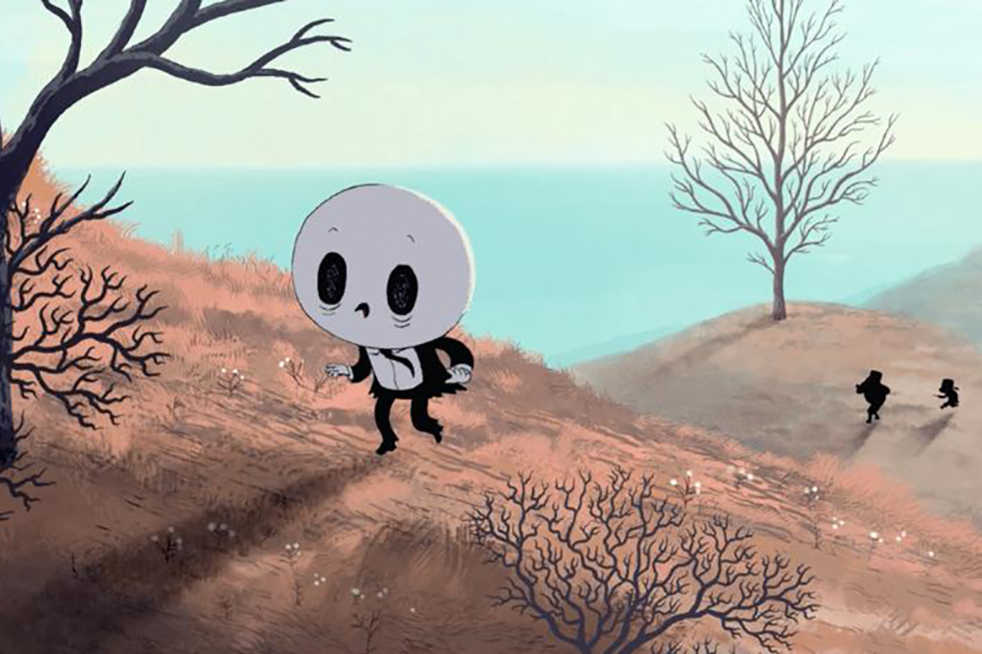Hand drawn animation is a dying artform. As more and more mainstream animated features are rendered in 3D, animated film seems to be losing its stylistic way. Films, like “The Good Dinosaur” and “Coco,” pine after visual realism, earning praise for photorealistic backdrops and textures.
The 3D animation industry is scrambling towards realism, as if the goal is to eliminate the distinction between computerization and live-action. But, in the process, the industry is losing all the qualities that make animation so special to begin with.
In experiencing the animated image, viewers can experience stories, worlds and characters through a meticulously designed lens, completely different from their experience of reality. Animators that operate in 2D can modulate their rendering styles to add another layer of visual storytelling to film that live-action and photorealism simply cannot.
Last year, GKIDS, an independent animation distributor, quietly released two hand drawn films: “The Girl Without Hands” by Sebastien Laudenbach and “My Entire High School Sinking into the Sea” by Dash Shaw. Neither told a particularly revolutionary or groundbreaking story, with the former retelling a Brothers Grimm fairytale, and the latter depicting a band of high schoolers trying to escape their high school as it falls off a cliff into the sea below. Still, both were more impressive than any other animated feature in 2017 because of their
unique visual styles.
Laudenbach’s film was drawn with minimalist brush strokes, quivering with every frame, making each character seem more vital and alive than any actor could appear on screen. Shaw, too, drew his characters with thick black, modulating lines, pulsing with blotches of color, at once defined yet obscured to reflect his adolescent characters’ search for identity.
And so, in their admirable crusade to keep independent animation alive, GKIDS has released their latest hand drawn film, “Birdboy: The Forgotten Children” by Spanish directors Alberto Vazquez and Pedro Rivero. Drawn with lush pink and red watercolors, the film follows a group of anthropomorphic teenagers living on a post-apocalyptic island. Dinky, the protagonist, is a mouse seething under the reign of her fatalistic religious parents. Along with her friends, each combatting their own emerging demons, Dinky attempts to find passage off the island so she may escape the decay and misery that colors their world.
Dinky and her friends cross paths with a gaggle of characters, each battling crises of their own. On their way off the island, Vazquez and Rivero simultaneously turn the narrative’s attention to Dinky’s friend — Birdboy, the reclusive son of the island’s deceased resident vigilante — as he attempts to evade the authorities.
At the same time, Birdboy has to come to terms with his father’s death and suppress the raging demons inside him with copious amounts of drugs. Upon his father’s wishes, Birdboy, dressed in a pint-sized suit under his circular head, tends to a diverse and beautiful ecosystem hidden under the rotting island’s surface.
Though the characters are all little animals, “Birdboy” is far from a children’s movie. In a manner similar to “Maus,” Vazquez and Rivero contrast the innocence of the characters’ appearances with the very real demons, both internal and external, that they must face as they find themselves growing up into the “real” world around them. This is world where drugs are a salve for characters’ internal wounds, where cults of filth reign in the wastelands on the island, where people are murdered over a couple of coins and trash. And yet, along with the filth and sin, there is beauty — glimmers of hope in a good deed and a
pretty vista.
Vazquez and Rivero are able to navigate this dichotomy through their visual style. Cartoonish characters are confronted at once with black, gangly demons, and golden, Miyazaki-esque pixies that rejuvenate. The landscape is awash with bright and somber watercolors, at once foreboding and beautifully arresting. Every element on screen feels real, though it may not look it.
Unfortunately, the story does not always achieve the poignancy and coherence that its visuals mange to. The plot often meanders, hopping from location to location without providing much to digest about its characters. Viewers are vaguely aware of characters’ demons and frustrations, but neither is handled with enough nuance for viewers to invest themselves in much beyond the visuals.
Vazquez and Rivero admirably want to highlight the importance of finding the beauty in one’s reality. However, since their characters lack the depth and color of their landscapes, the directors’ attempts to communicate their point come off as heavy handed and a little convenient.
The plot pushes characters from one event to the next until everything is resolved in a pat bow, leaving viewers with little to munch on once the credits start rolling.
Ultimately, “Birdboy: The Forgotten Children” is a respectable attempt at using the many oft-overlooked assets of hand drawn animation to deliver a very relatable coming-of-age. “Birdboy: The Forgotten Children” is playing at the Plaza Theatre.
